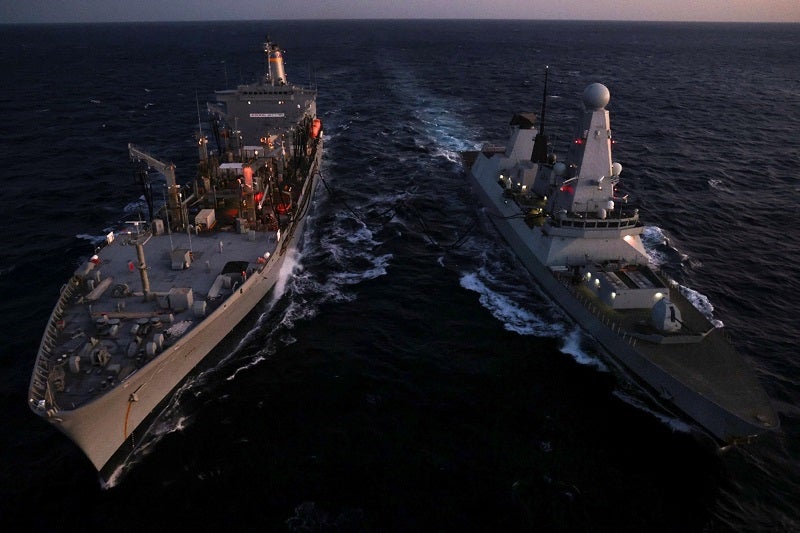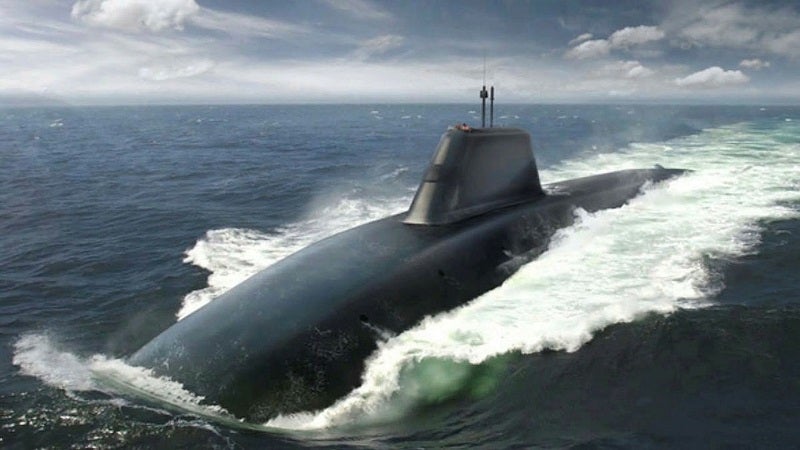The UK Royal Navy is beginning to explore the possibility of powering surface ships – auxiliary vessels and combatants – with Generation 4 nuclear technologies, according to a request for information (RFI) last month.
It is worth noting that this effort only serves to inform the service about the viability of this next-generation energy solution for the surface fleet, it does not reflect any procurement activity at this stage.
Nuclear energy has been used to power Britain’s fast-attack (SSN) and ballistic missile (SSBN) submarines since 1960; the capability ensures that boats are submerged for as long as necessary.
While nuclear power is necessary for submerging submarines at the operational level, the power source is not typically used for surface ships for various reasons. It is mainly due to the overwhelming cost of designing a specialised reactor as well as concerns about safety and subsequent restrictions on port access.
Nevertheless, this latest call for information, if it is currently feasible, marks a potentially significant transition in powering UK surface vessels.
Four generations of nuclear power
The nuclear power industry has been developing and improving reactor technology for more than five decades according to the World Nuclear Association. Several generations of reactors are commonly distinguished.
- Generation 1 reactors were developed in 1950-60s, and the last one shut down in the UK in 2015.
- Generation 2 reactors are typified by the present US and French fleets and most in operation elsewhere.
- So-called Generation 3 (and 3+) are advanced reactors, though the distinction from Gen 2 is arbitrary. The first ones are in operation in Japan and others are under construction in several countries.
- Gen 4 technologies are theoretical designs at present, though the Association notes their development will start to emerge this decade.
Existing nuclear-powered surface ships
Nuclear-powered surface ships are not a new concept. There are certain applications where the concept is worth the expense.
Nuclear propulsion has proven technically and economically essential in the Russian Arctic where operating conditions are beyond the capability of conventional icebreakers. The icebreaker Lenin was the world's first nuclear-powered surface vessel (20,000 dwt), commissioned in 1959. It remained in service for 30 years to 1989, and was retired due to the hull being worn thin from ice abrasion.
The US Navy had built 219 nuclear-powered vessels to mid-2010. All US aircraft carriers and submarines are nuclear-powered. Meanwhile, the UK’s Queen Elizabeth-class carriers are powered by two 36 MW gas turbines driving electric motors.
Royal Navy plans for Gen 4
Firstly, the Royal Navy aim to align their requirements with the existing capabilities provided by industry.
As part of the RFI process, the service identifies two solutions available on the market today, namely micro modular reactors and larger Gen 4 reactors. Though, it acknowledges that “substantial questions remain over the integration of both… onto surface platforms.”

Secondly, the Royal Navy will map out opportunities for a system-of-systems approach to deliver Gen 4 nuclear power, while exploring ways to spirally develop the capability with the potential of making systems modular by design.
While the concept is under consideration, the cost of this endeavour will remain a lingering problem for the government. The Strategic Defence Review (SDR), due to be published in the first half of 2025, is expected to trim down excessive programmes pursued under the previous Conservative government.
Yet, the UK Ministry of Defence may still determine that nuclear-powered warships may prove to be an essential part of Britain’s defence policy, especially considering the nation’s commitment to strengthening its presence in the Indo-Pacific region.
Mark Cancian, senior fellow, Center for Strategic and International Studies, explained that in a prospective conflict over Taiwan, the US and its allies will be facing “contested logistics,” which is something the US has not had to deal with since 1945.
“You’re going to have to escort ships across the oceans. And that’s going to take a lot of ships," Cancian said.
To that end, coalition navies will benefit from the unlimited range at which their warships and auxiliary vessels may travel in such a vast maritime space, if nuclear-powered.
Industrial development
Britain already has an advantage in its reliance on Rolls-Royce to provide a sovereign nuclear naval power capability. Currently, the supplier powers the Royal Navy’s Vanguard, Astute and future Dreadnought submarines.

The Vanguard and Astute classes use the second generation Pressurised Water Reactor (PWR). Current generations of PWR would enable submarines to circumnavigate the world approximately 20 times while the latest development of PWR would enable circumnavigation 40 times without refuelling.
The coming Dreadnought-class SSBNs will use the future PWR3 reactor, a next-generation propulsion capability that may be used to provide power for the future SSN-AUKUS submarines to be developed for the UK and Australia.
Likewise, the company is already well-placed to deliver such a capability to the Royal Navy surface fleet having already produced nuclear reactors for use beyond the submarine sector. In December 2023, the company unveiled a nuclear Space Micro-Reactor Concept Model as part of a UK Space Agency programme.
All space missions depend on a power source and, as a self-contained and power-dense solution, a Micro-Reactor can provide power for the habitation and exploration of a planetary surface, or power and propulsion for spacecraft.
Continuous power and efficient propulsion can also provide satellites with more flexible movement to protect and defend key orbits. Rolls-Royce plan to have a reactor ready to send to the Moon by the early 2030s.









